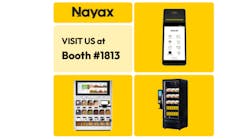NHTSA Certification — It's Not Just A Label
Source NTEA – The Association for the Work Truck Industry
Vehicle safety is a primary concern for anyone building, selling, buying or using a work truck. A series of laws and regulations help ensure motor vehicles sold in the U.S. meet specified safety standards.
There are numerous reasons why vehicle certification — the process by which companies in the manufacturing chain attest that a vehicle meets the standards set forth by the National Highway Traffic Safety Administration (NHTSA) — is important.
Truck buyers
Work truck purchasers may obtain a vehicle in a variety of ways, such as from a dealer or leasing company. In either circumstance, the buyer likely works with the dealer or leasing company to specify body and equipment type needed.
As a result of various financing methods, a truck purchaser may or may not be the actual consumer or end user. For example, the end user might be an employee with no financial interest in the vehicle, and the purchaser could be a company that leases to the business using the truck.
Certification issues
If you purchase a completed and certified truck from a dealer’s lot, and put it into service without making any modifications to it, you may not have significant certification concerns. This would not be the case if you are involved in spec’ing the truck or performing work on it after receipt. If you, as the purchaser, do any further manufacturing, modification or repairs, there could be considerable certification concerns.
To the extent you are involved in the design of your truck by specifying preferred body and equipment, you take some responsibility for the end product. In order to protect yourself, your company and employees, it’s important to understand the motor vehicle safety standard certification system and any direct or indirect responsibilities or liabilities you could be accepting. For instance, if a final-stage manufacturer or alterer says the body and equipment you want cannot be properly certified on the chassis specified, work with them to find the right chassis/body/equipment combination.
Leasing companies
It’s common for a fleet to lease its trucks through a leasing company as well as turn over some (or all) maintenance work. The leasing company may even alter or modify a truck per the customer’s request.
If alterations or modifications are made, there will be certification-related issues. If the truck has a final-stage certification label but has not been sold and registered, the work being performed is considered an alteration and requires an altered label. The same work done on a vehicle already sold and registered is deemed a modification.
It isn’t unusual for a leasing company to buy a new truck on behalf of a customer, complete the registration process and install the requested equipment. In this instance, the work is considered a modification. A modifier is a person who works on a used vehicle (one that has been sold but is not intended for resale, and is licensed and titled).
While there would be no requirement for the leasing company to label the vehicle, it would still be liable for the safety ramifications of the work performed.
Federal law prohibits a manufacturer, distributor, dealer or repair business from knowingly making inoperative any part of a motor vehicle or motor vehicle equipment that is in compliance with an applicable safety standard. Therefore, any installation or work done on a used truck should be performed in the same manner as though it were to be certified.
Conversely, a fleet that purchases a chassis through a dealer and then has it shipped to an upfitter for completion or alteration would not have a certification labeling responsibility.
It’s my truck
Some work truck owners may believe once a truck is bought and registered, they can do whatever they wish without regard to certification. The responsibilities of a company working on a vocational truck do not necessarily end when the last certification label is affixed.
Work performed after a completed vehicle has been purchased and registered constitutes modifications. Federal law prohibits knowingly making inoperative parts of the vehicle subject to safety standard compliance. Further, taking such actions would expose you to civil liability — both now and later, if sold.
For example, you buy a van from a dealer, register it and bring it back to your garage, where you then install various bins and racks. You have the responsibility to make sure your actions have not taken the vehicle out of compliance with safety standards.
Similarly, if you buy a truck or chassis and send it to a local welding shop to have a new (or used) body or equipment added, you and the welding shop have taken on liability.
End users as final-stage manufacturers
Typically, end users are not expected to be final-stage manufacturers — but it isn’t an uncommon occurrence. When operations are performed that result in end users becoming final-stage manufacturers, they take on all certification liability in the same manner as any motor vehicle manufacturer. These responsibilities include actual safety standard certification and associated recordkeeping requirements (such as retaining the incomplete vehicle document and related documentation of your work). If it has not yet been attached, the label provided by the incomplete manufacturer must be affixed to the vehicle. Also, end users (purchasers) who have become final-stage manufacturers have potential vehicle recall and remedy responsibilities.
Let’s say you buy a new chassis-cab (incomplete vehicle) directly from a dealer, take the truck chassis to your shop and mount a body. You are now the final-stage manufacturer. When the ultimate customer buys an incomplete vehicle and installs additional equipment, the purchaser becomes, in effect, a manufacturer of the vehicle for purposes of federal law and thus is subject to all certification requirements.
In that situation, the end user (or purchaser) is a final-stage manufacturer and therefore required to certify the vehicle in the final stage and affix a final-stage certification label in an approved location. Even though the chassis-cab was involved in its first retail sale, it was an incomplete vehicle and not yet certified in the final stage (which must occur with every vehicle). Thus, when installing a truck body on a newly purchased truck chassis, you unwittingly become a motor vehicle manufacturer with legal responsibilities.
Employers: Safety first
If you are the purchaser of a work truck — whether directly from a dealer or through a leasing company — you are likely an employer or fleet. As such, employee safety would be a key concern.
Proper certification gives you assurances the work truck you purchased — and your employee is driving — is compliant with the latest Federal Motor Vehicle Safety Standards (FMVSS). Understanding the certification process will help ensure your trucks provide drivers all the safety benefits resulting from those standards. Failure to recognize the certification process — and putting workers into uncertified or improperly certified vehicles — could expose you to liability.
Being knowledgeable about FMVSS certification will allow you to better assess the vendors building your trucks. It will also help you create specifications for the trucks you wish to purchase as well as protect your business and employees.
More fleet management-related resources are available at ntea.com/fleetresources.
Established in 1964, NTEA – The Association for the Work Truck Industry represents 1,800 companies that manufacture, distribute, install, sell and repair commercial trucks, truck bodies, truck equipment, trailers and accessories. Buyers of work trucks and the major commercial truck chassis manufacturers also belong to the Association. NTEA provides in-depth technical information, education, and member programs and services, and produces The Work Truck Show®. The Association maintains its administrative headquarters in suburban Detroit and government relations offices in Washington, DC, and Ottawa, Ontario.





